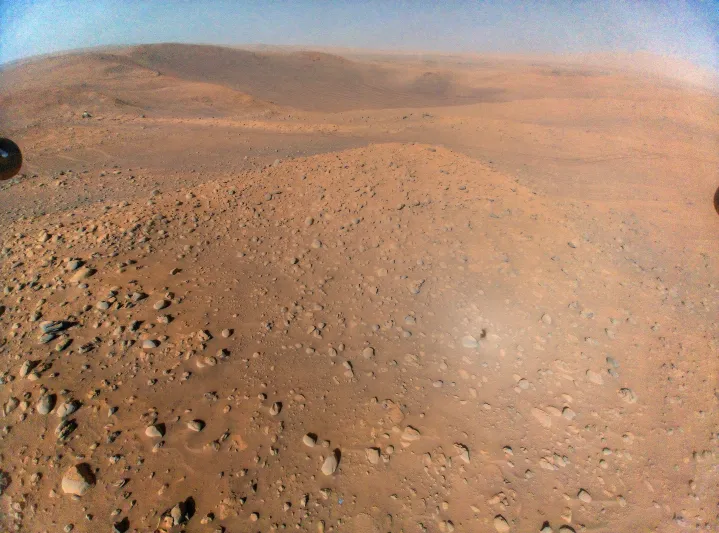Everyone’s favorite Mars double act, the Ingenuity helicopter and the Perseverance rover, have been traveling together recently after spending several months apart. As they explore the site of an ancient river delta in the Jezero crater, the pair have snapped images of each other that were recently shared by NASA.
The Perseverance’s cameras caught this great shot of Ingenuity, which, as noted in the rover’s Twitter post, is now considerably dustier than it was when it first deployed from under the rover’s belly two years ago. In its two years on the red planet, Ingenuity has made more than 50 flights, which is incredible when you consider that it was designed to perform just five flights. During that time, Ingenuity had to take a break from long flights to deal with the cold martian winter, but since the beginning of the year, the helicopter has been back, making some of its longest flights yet.

Got a closer look at the #MarsHelicopter than I’ve had in quite a while. Ingenuity is a little dustier since its first flight two years ago today (!!) – but it’s looking mighty good after 50 flights! pic.twitter.com/dfGsKbu7Uj
— NASA's Perseverance Mars Rover (@NASAPersevere) April 19, 2023
Ingenuity and Perseverance are currently close to each other because Ingenuity has finished its solo adventures exploring Mars from the air. Now, it is the helicopter’s job to help the rover by scouting ahead and looking for a clear route for the rover to drive along. The pair are in a region close to the Belva Crater, which they are exploring as part of the rover’s Upper Fan campaign. Scientists are hoping to learn about how the crater was shaped by studying the history of water on the planet.
“Belva Crater has an interesting depth-to-diameter ratio compared to other martian craters, as it is shallower than expected,” writes Perseverance student collaborator Eleni Ravanis. “The crater walls also appear to have been breached. Is the crater infilled, or were the rims eroded down? Were the crater walls breached by water, or ice? Our science team hopes to answer these questions by taking a closer look at the crater walls from our vantage point.”
As for Ingenuity, during its 51st flight, it took a gorgeous shot of Mars from the air with a special photo bomb: Perseverance is visible in the top-left of the image. This is the view that Ingenuity sees from 40 feet about the surface.

Can you spot @NASAPersevere?
Ingenuity completed Flight 51 over the weekend, snapping a special cameo of the rover from 40 ft (12m) in the air. On this flight, the #MarsHelicopter traveled 617 ft (188 meters) for 136.89 seconds. https://t.co/1CXIWdYIAQ pic.twitter.com/Oyi6hkucPv
— NASA JPL (@NASAJPL) April 25, 2023
Ingenuity is gearing up for its 52nd flight, expected to take place soon, in which it will travel nearly 1,200 feet across the surface and rise up to 40 feet in the air.



